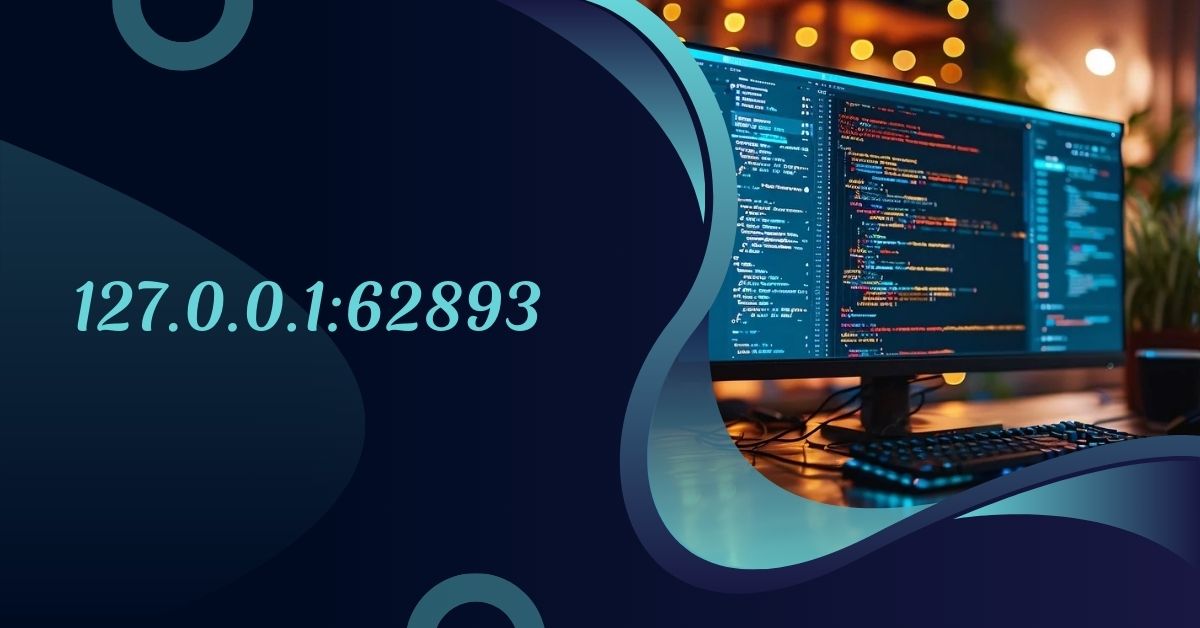In the realm of networking and computer systems, certain technical concepts might seem esoteric to the uninitiated. One such concept is the combination of an IP address and port number, specifically “127.0.0.1:62893”.
This combination is vital for various testing and troubleshooting activities. In this article, we’ll demystify the significance of 127.0.0.1:62893, exploring its components, uses, and importance in modern computing.
Our goal is to provide an in-depth, easy-to-understand guide that will enhance your understanding and usage of this crucial aspect of network communications.
What is 127.0.0.1?
The Loopback Address
127.0.0.1 is an IP address known as the loopback address. This special IP address is part of the IPv4 address space reserved for loopback testing. It allows a computer to communicate with itself using the network stack. This feature is particularly useful for:
- Testing Network Applications: Developers can use 127.0.0.1 to test network applications without requiring an actual network connection.
- Troubleshooting: By using the loopback address, you can verify that the network stack on your machine is functioning properly.
Why Use 127.0.0.1?
The loopback address is invaluable for several reasons:
- Isolation from External Networks: Tests conducted using 127.0.0.1 are not affected by external network issues.
- Rapid Feedback: It provides immediate feedback when testing network-related software or configurations.
- Security: It ensures that the data never leaves the local machine, reducing the risk of exposing sensitive data to external networks.
Understanding Port Numbers
What is a Port Number?
In computer networking, a port number is a numerical identifier in the transport layer protocols (such as TCP or UDP). It is used to distinguish different types of network traffic. Port numbers range from 0 to 65535 and are categorized into:
- Well-Known Ports (0-1023): Reserved for common services (e.g., HTTP uses port 80).
- Registered Ports (1024-49151): Used by software applications and services.
- Dynamic or Private Ports (49152-65535): Temporarily assigned for dynamic use.
The Role of Port Number 62893
Port number 62893 is classified as a dynamic or private port. This means it is typically used for ephemeral or temporary connections. Applications use dynamic ports for:
- Short-Lived Connections: Temporary communication channels between applications.
- Custom Applications: Specialized software that requires unique, non-standard ports for communication.
The Significance of 127.0.0.1:62893
Combining IP and Port Number
When you see 127.0.0.1:62893, it represents a local communication channel on your computer. Here’s why this combination is significant:
- Local Testing and Debugging: Developers often use 127.0.0.1:62893 to test how their applications handle dynamic ports and local connections.
- Security and Privacy: The combination of loopback address and dynamic port ensures that the data remains within the local machine, protecting it from external threats.
Real-World Applications
In practical terms, 127.0.0.1:62893 might be used in various scenarios:
- Web Development: Developers might use this address and port to test web applications locally before deploying them.
- Database Management: Database applications may use dynamic ports for client-server communication on the local machine.
- Custom Software Testing: Software developers may use 127.0.0.1:62893 to test network features of custom applications.
Setting Up and Using 127.0.0.1:62893
How to Use 127.0.0.1:62893
Using 127.0.0.1:62893 typically involves configuring your application to listen on this address and port. Here’s a basic guide:
- Modify Application Settings: Configure your application to use 127.0.0.1 as the IP address and 62893 as the port.
- Run Your Application: Start your application and ensure it is listening on the specified address and port.
- Testing and Debugging: Use tools like telnet or network monitoring software to verify the connection and troubleshoot any issues.
Troubleshooting Common Issues
If you encounter problems while using 127.0.0.1:62893, consider the following:
- Port Conflicts: Ensure that no other application is using port 62893. You can check this using network tools or commands.
- Firewall Settings: Verify that your firewall settings allow local traffic on the specified port.
- Application Configuration: Double-check that your application is correctly configured to use 127.0.0.1 and port 62893.
Advanced Concepts
Security Implications
Using 127.0.0.1:62893 is generally secure because the loopback address is only accessible from the local machine. However, consider these advanced security practices:
- Restrict Port Usage: Ensure that dynamic ports like 62893 are not exposed to external networks.
- Regular Audits: Periodically review and audit your application’s use of local ports to prevent potential security risks.
Performance Considerations
While using a loopback address and dynamic port is efficient for local testing, be aware of the following:
- Resource Allocation: Dynamic ports are ephemeral, so ensure your application can handle the allocation and release of ports efficiently.
- Scalability: For large-scale applications, consider how using local ports might impact performance and scalability.
FAQs
What is the purpose of 127.0.0.1?
127.0.0.1 is the loopback address, allowing a computer to communicate with itself for testing and troubleshooting purposes. It ensures that network traffic stays within the local machine.
What does the port number 62893 signify?
Port number 62893 is a dynamic or private port used for temporary communication in various applications. It is not a well-known port but serves as a temporary channel for specific tasks.
How can I use 127.0.0.1:62893 for testing?
To use 127.0.0.1:62893, configure your application to listen on this IP address and port. You can then test network features or troubleshoot issues without involving external networks.
Are there security risks associated with using 127.0.0.1:62893?
Using 127.0.0.1:62893 is generally secure since it is restricted to local communication. However, ensure that dynamic ports are not exposed to external networks and regularly review your application’s configuration.
What should I do if port 62893 is already in use?
If port 62893 is in use, consider changing the port number in your application’s configuration or identify and resolve the conflict using network tools.
Conclusion
The combination of 127.0.0.1 and port 62893 is a fundamental concept in network communications, especially for developers and IT professionals. By understanding the loopback address and dynamic ports, you can better test and troubleshoot network applications. This guide has provided a comprehensive overview of 127.0.0.1:62893, including its uses, significance, and practical applications. Whether you are a developer or an IT enthusiast, mastering these concepts will enhance your ability to manage and optimize network communications effectively.










